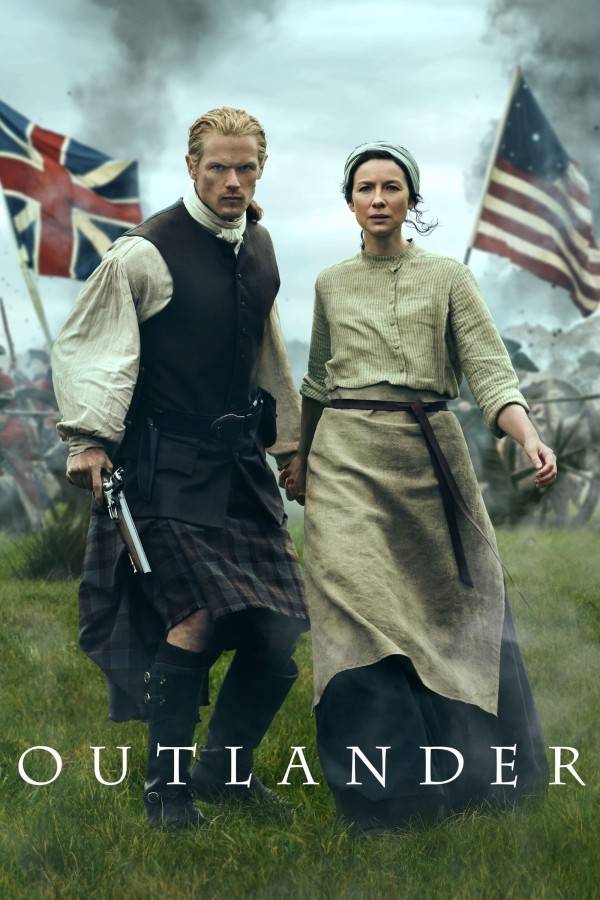A history of kilts by way of Outlander
 If you’ve read the Outlander series by Diana Gabaldon or watched the show on Stars, you may have noticed that kilts are pretty important to the Scottish clans of the late 18th century. Today, many Scottish people and people with Scottish heritage - as well as many Renaissance festival-goers - can be seen sporting kilts in many different styles and patterns. Let’s talk briefly about the history of kilts and take a look at why Jamie Fraser, played by the Scottish actor Sam Heughan, undoubtedly wears it best.
If you’ve read the Outlander series by Diana Gabaldon or watched the show on Stars, you may have noticed that kilts are pretty important to the Scottish clans of the late 18th century. Today, many Scottish people and people with Scottish heritage - as well as many Renaissance festival-goers - can be seen sporting kilts in many different styles and patterns. Let’s talk briefly about the history of kilts and take a look at why Jamie Fraser, played by the Scottish actor Sam Heughan, undoubtedly wears it best.
The beginning of kilts
The word “kilt” is actually from the Old Norse word “kjalta,” which means to be tucked up, in the way the great kilt is worn by many Highlanders in Outlander. Great kilts (feileadh mòr in Scots Gaelic) date back to at least the 16th century. For fans of Braveheart, I’m sorry to say that this means Mel Gibson should not have been wearing a kilt in that movie, which was supposed to have happened in the 13th or 14th century. This great kilt is essentially one long piece of rectangular fabric up to 7 yards (6.4 meters) in length that is folded to create pleats and wrapped around the body and folded, tied in place by a belt.
 The excess fabric that is draped over the shoulder of the wearer is referred to as the “plaid” which Jamie uses to bundle up Claire on horseback when she first goes through the stones in the first book/season 1 and is made to ride with Jamie back to Castle Leoch. The “small kilt” or “walking kilt” is essentially the bottom half of the great kilt, sans plaid thrown over the shoulder. These did not become common until later in the mid-1700s.
The excess fabric that is draped over the shoulder of the wearer is referred to as the “plaid” which Jamie uses to bundle up Claire on horseback when she first goes through the stones in the first book/season 1 and is made to ride with Jamie back to Castle Leoch. The “small kilt” or “walking kilt” is essentially the bottom half of the great kilt, sans plaid thrown over the shoulder. These did not become common until later in the mid-1700s.
Check out how to put on a great kilt with Andy the Highlander on YouTube:
Kilts and clans
As kilts became more common, the tartan patterns were made to represent different regions, although it’s thought that the colors in different tartans originated from whatever local plants and other dye materials could be found in a given area. In Outlander, the Fraser kilt is a light blue-gray and brown, with yellow and red stripes, as officially seen first when Jamie wears it to marry Claire (before then, recall that he is trying not to be recognized as Jamie Fraser, even going by one of his many false names, “Jamie McTavish”). Now, if you search the Scottish Register of Tartans (yes, that’s a thing), two dozen different tartan patterns emerge after a search for “Fraser.” You can browse the myriad tartan patterns available today on tartanregister.gov.uk

Illegal kilts and present-day kilts
Gabaldon certainly did her research, and as she writes in the books, at one time kilts were outlawed in Great Britain. The monarchy was out to quash the Jacobite uprising by diminishing the power of the clans in the Scottish Highlands, so King George II enacted the “Dress Act” in 1746 following the loss of the Scottish and Bonnie Prince Charlie to the English at the Battle of Culloden. This law remained in place for 35 years - long enough for some of the traditions of the kilt to be forgotten. However, after the ban was lifted, many wanted to revive and renew Scottish traditions, including the kilt. Tartan patterns began being used to represent individual clans more so than just broad regions. Since then, kilts have been worn worldwide to celebrate Scottish heritage and culture. Today you can find kilts in a plethora of styles and patterns. You don’t even have to be Scottish to sport your favorite kilt.
Also in...
Also on...
Outlander
The story of Claire Randall, a married combat nurse from 1945 who is mysteriously swept back in time to 1743, where she is immediately thrown into an unknown world where her life is threatened. When she is forced to marry Jamie, a chivalrous and romantic young Scottish warrior, a passionate affair is ignited that tears...
Other Spotlights



![Outlander Tartan Stainless Steel Vacuum Insulated Tumbler [Travel Mug] Double Wall Water Coffee Cup](https://m.media-amazon.com/images/I/41EKQQq-DxL._SL160_.jpg)







 The Roku Channel
The Roku Channel Starz Roku Premium Channel
Starz Roku Premium Channel Starz
Starz Starz Play Amazon Channel
Starz Play Amazon Channel Apple TV
Apple TV Google Play Movies
Google Play Movies



















